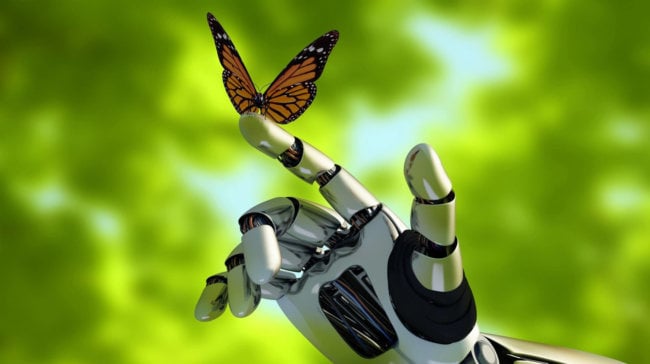
Engineers from the University of California at San Diego, the technology of manufacturing of soft robots were used in the creation of lightweight and flexible glove that allows users to experience haptic feedback when interacting with virtual reality. These gloves have already demonstrated their ability to simulate realistic tactile feedback when playing on a piano with virtual keyboard.

The results of the new study are at the prototype stage, was presented by the engineers at the conference Electronic Imaging, the Engineering Reality for Virtual Reality in Burlingame (CA).
Currently, user interfaces, virtual reality is somewhat remote from the user, because he does not feel surfaces and objects in a virtual space. According to the researcher Jurgen Schulze (Jurgen Schulze) from the Institute Qualcomm Institute University of California San Diego, this is not a realistic way of interaction, because the user can’t touch. The new development enables users to tactilely experience the virtual reality like physical reality.
Other research teams also worked on the gloves as the interface of virtual reality. But they are too bulky and made of heavy materials such as metal. Developed by engineers new gloves contain a soft exoskeleton, with soft muscles, intended for robots, which makes them much lighter and easier to use.
Michael Tolly (Michael Tolley), Professor of mechanical engineering at the Jacobs School of Engineering, University of California at San Diego, who is also the lead author of the study, notes that the first prototype of the new gloves were surprisingly effective. According to him, the ultimate goal of developers is to create a device that provides “a richer experience” interaction with a virtual reality. New development could potentially find a use not only for video games and other digital entertainment, but also in surgery.
The considered system consists of three main components. Leap Motion sensor detects the position and movement of the user’s hands. Special inkjet switchboard controls the movement of the gloves. Designed for use in soft robotic components to consider gloves for virtual reality inflate and deflate, thereby imitating the muscular efforts that have been made by the user in the space of virtual reality. The system interacts with the computer display which displays a virtual piano keyboard on the background of the river and trees.
One of the key elements of the design of the gloves is a kind of component for soft robots and is called the Mckibben muscle latex of hollow braided material. Artificial muscles respond to the forces created by the movement of the user’s finger. The switchboard controls the muscles, inflating and blowing them.
Researchers have printed 3D printer form (mold) to create soft exoskeletons designed for virtual reality gloves. This, as the researchers note, could facilitate the production of such devices can be mass production. As a material of the exoskeleton researchers have used silicone rubber with Velcro strips in the joints.
The engineers conducted an informal pilot study, which was attended by 15 users. Including 2 experts in the field of virtual reality. All participants in the study tried a test sample, allowing them to play piano in the virtual reality. All the researchers agreed that the new gloves increase the level of immersion in virtual reality. They praised the new development, calling it “fascinating” and “amazing”.
Engineers are working to make gloves for virtual reality cheaper less bulky and more compact. They also hope to be able to do without the Leap Motion device that would make the considered above system more compact.
In August 2016, it was reported glove Dexmo that allows you to touch virtual reality. At the end of June last year, has also been considered to improve the gaming experience gloves Contact CI. About the amazing musical gloves that turn into synth any surface, also it was told in the spring of 2016. The Omni glove Hands with a return response that extends the face of virtual reality, revealed in April 2015. Therefore, new development — but not the first, but important step towards bringing the user experience from virtual space to real.
Will the advent of virtual reality devices a chance to touch the elements of digital space to boost the popularity of devices designed to interact with it?
Materials sciencedaily.com
Created a “robotic” glove that allows you to touch virtual reality
Oleg Dovbnya